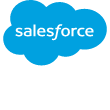Sourcing subscription services KPI data – considerations & recommendations

In one of our earlier blog posts we discussed how to calculate subscription service KPIs.
Once the KPIs are agreed upon, a decision must be made where should the corresponding data be sourced from?
This is important, since the data is usually distributed across multiple systems (CRM, order processing, service inventory, finance, etc.) and possibly duplicated (e.g., an order in an order processing system will most likely have a corresponding opportunity with one or more quotes in the CRM). Sometimes, data can be duplicated within a single system, e.g., CRM quotes and orders.
The objective is to make the best choice as far as reporting accuracy and ease of sourcing are concerned.
Bad choice of a data source — an example
Let’s start with a simple example in which we want to calculate churn based on monthly recurring revenue (MRR) using the service inventory.
The formula is:
churn % = revenue lost in a month / total revenue at the beginning of the month
Let’s assume that there are three active services at the beginning of the month:
| SERVICE | MRR |
|---|---|
| SERVICE‑1 | $120.00 |
| SERVICE‑2 | $130.00 |
| SERVICE‑3 | $150.00 |
| Total Monthly MRR | $400.00 |
In the middle of the month, a customer decided to upgrade SERVICE-3, which required rip-and-replace, and caused cancellation of SERVICE-3 and building SERVICE-4 with $200.00 of MRR instead:
| SERVICE | MRR |
|---|---|
| SERVICE‑1 | $120.00 |
| SERVICE‑2 | $130.00 |
| SERVICE‑3 | ($150.00) |
| SERVICE‑4 | $200.00 |
| Total Monthly MRR | $450.00 |
From the service inventory perspective one service was lost, so the calculation looks like follows:
churn = 150.00/400.00 = 37.5%But this is misleading as no business was lost whatsoever! Instead, zero churn and $50.00 of revenue uptick should be reported.
So, where does the problem come from? Well, the service inventory on its own does not know about the relationship between SERVICE-3 and SERVICE-4.
Let’s take a look how this could look on an order:
| ORDER | LINE ITEM/OPERATION | SERVICE | SERVICE MRR |
|---|---|---|---|
| ORDER-1 | LI-1 / REPLACE | ||
| SERVICE-3 (REPLACED SERVICE) | ($150.00) | ||
| SERVICE-4 (NEW SERVICE) | $200.00 | ||
| Net MRR | $50.00 |
This is a much more usable information structure for churn calculation — looking at a list of active services month-to-month alone (without orders), it is impossible to obtain accurate churn numbers.
Recommendations
Look for natural data sources
Most KPI definitions state that a KPI should be “available and measurable”. This also applies to systems, so it’s best to look for the most “natural” system for a particular KPI, e.g.:
| System | Example KPIs |
|---|---|
| CRM | Quotes, sales bookings, etc. |
| Order management | Churn, compression, order cancellations, etc. |
| Service inventory | Total MRR, MRR by product, etc. |
| Financials | Gross revenue, EBIDTA, etc. |
Re-examine KPIs that are difficult to obtain
If you can’t find a “natural” place where a KPI can be sourced from, a red flag should be raised — it may indicate that there’s a problem with the current data model or systems.
Perhaps some changes are required — for example, in the Salesforce world, a new formula or trigger-calculated field may need to be added.
Another indicator of a bad KPI is a calculation with many if/then/else or exclusions — if data source is well defined, pulling data should be like a simple SQL select statement.
Don’t let ease or difficulty of implementation affect your choice
Sometimes, ease of implementation drives the choice — a few KPIs are sourced from a system already and it is easy to add one more, even though it is generally agreed that it should be sourced from somewhere else.
This usually leads to problems down the road with more conditions and data transformations, usually leading to eventual re-design & re-implementation.
Don’t be afraid to make changes
Organizations evolve and so do their systems. Startups track their businesses using Microsoft Excel spreadsheets and later purchase more complex IT systems to match their scale and support their business processes.
A perfect data source may not be available up front; however, this may change over time — making use of new systems as data sources sooner rather than later almost always pays off.
Conclusions
Building good KPI reporting can be difficult but is required for any organization to be successful.
Many decisions need to be made along the way, with data sourcing being one of the most important ones.
Even when most data resides on a single platform (e.g., Salesforce CPQ, Orders, Service Cloud, Billing and Financial Force) the process requires a lot of preparation, although fewer systems generally decrease cost of reporting implementation and maintenance.
Nextian is a vendor of Quote-to-Cash (QTC) software for cloud and communications helping providers accelerate growth and increase customer lifetime value.
Our Reporting & Analytics module contains 80+ pre-configured dashboards and reports featuring real time updates and pre-built, best-practice quote-to-cash metrics for subscription services.
Contact us today to find out how we can help you!
Related posts
2024 telecommunications industry trends in quote-to-cash
Learn about 2024 telecommunications industry trends: shift towards software, digital experience, automation, API-fication and AI & algorithms.
Taking telco service delivery to the next level
Take your telco service delivery to the next level with task automation, intelligent task assignments, automated scheduling and forecasting and others.
Increasing sales velocity for cloud & communications services
Increase sales velocity of cloud and communications services and quickly generate revenue with rapid quoting, automated renewals and omni-channel sales.
GET THE NEXTIAN ADVANTAGE
We help enterprises increase revenue, profitability and gain efficiencies by realizing the full potential of the Salesforce platform.




